

Olecranon. The olecranon /oʊˈlɛkrənɒn/ from the Greek olene meaning elbow and kranon meaning head.[1] is a large, thick, curved bony eminence of the forearm that projects behind the elbow.
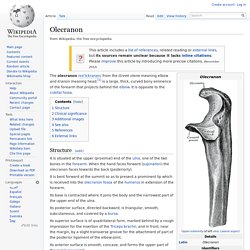
It is opposite to the cubital fossa. Structure[edit] It is situated at the upper (proximal) end of the ulna, one of the two bones in the forearm. When the hand faces forward (supination) the olecranon faces towards the back (posteriorly). It is bent forward at the summit so as to present a prominent lip which is received into the olecranon fossa of the humerus in extension of the forearm.
Its base is contracted where it joins the body and the narrowest part of the upper end of the ulna. Its superior surface is of quadrilateral form, marked behind by a rough impression for the insertion of the Triceps brachii; and in front, near the margin, by a slight transverse groove for the attachment of part of the posterior ligament of the elbow-joint.
Clinical significance[edit] Additional images[edit] Bones of left forearm. Numinous. Rudolf Otto[edit] Otto's use of the term as referring to a characteristic of religious experience was influential among certain religious intellectuals of the subsequent generation.
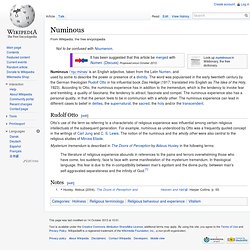
For example, numinous as understood by Otto was a frequently quoted concept in the writings of Carl Jung and C. S. Lewis. The notion of the numinous and the wholly other were also central to the religious studies of Mircea Eliade. Mysterium tremendum is described in The Doors of Perception by Aldous Huxley in the following terms: The literature of religious experience abounds in references to the pains and terrors overwhelming those who have come, too suddenly, face to face with some manifestation of the mysterium tremendum. Notes[edit] Mnemonist. The title mnemonist (derived from the term mnemonic) refers to an individual with the ability to remember and recall unusually long lists of data, such as unfamiliar names, lists of numbers, entries in books, etc.
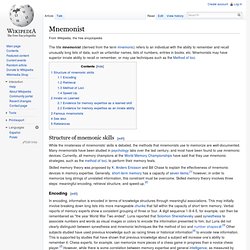
Mnemonists may have superior innate ability to recall or remember, or may use techniques such as the Method of loci. Structure of mnemonic skills[edit] While the innateness of mnemonists' skills is debated, the methods that mnemonists use to memorize are well-documented. Many mnemonists have been studied in psychology labs over the last century, and most have been found to use mnemonic devices. Currently, all memory champions at the World Memory Championships have said that they use mnemonic strategies, such as the method of loci, to perform their memory feats.
Skilled memory theory was proposed by K. Encoding[edit] Retrieval[edit] The next step is to create a retrieval structure by which the associations can be recalled. Method of Loci[edit] Speed Up[edit] Innate vs Learned[edit] Logogriph. Logodaedaly. Logodaedaly, logodaedalus, logodaedalist and logodaedale are related words to be found in the larger dictionaries of the English language.
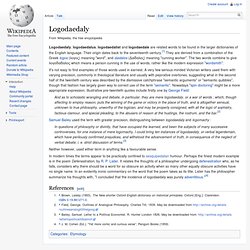
Their origin dates back to the seventeenth century.[1] They are derived from a combination of the Greek logos (λογος) meaning "word", and daidalos (Δαίδαλος) meaning "cunning worker". The two words combine to give λογοδαίδαλος which means a person cunning in the use of words, rather like the modern expression "wordsmith". And as to scholastic wrangling and debate, in particular, they are mere logodaedaly, or a war of words ; which, though affecting to employ reason, puts the winning of the game or victory in the place of truth, and is altogether sensual, unknown to true philosophy, unworthy of the logician, and may be properly consigned, with all the logic of sophistry, factious clamour, and special pleading, to the abusers of reason at the hustings, the rostrum, and the bar.[2] Neither however, used either term in anything like a favourable sense. Kpanlogo (drum) Kpanlogo is a type of drum that is associated with kpanlogo music.
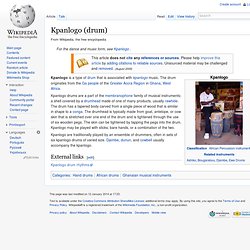
The drum originates from the Ga people of the Greater Accra Region in Ghana, West Africa. Kpanlogo drum rhythms.